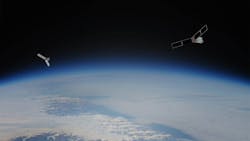NASA selects Rocket Lab USA to launch PREFIRE polar observation mission
WASHINGTON - The National Aeronautics and Space Administration (NASA) needed a launch provider for its Polar Radiant Energy in the Far-InfraRed Experiment (PREFIRE) mission. They found their solution from Rocket Lab USA Inc. of Long Beach, California.
The PREFIRE mission will measure variations in FIR emissivity and greenhouse effect via thermal radiometric sampling at the top of the polar atmosphere. These measurements are integrated with models to understand the role of far infrared (FIR) radiation in Arctic climate.
NASA says the PREFIRE mission will help close a gap in understanding of how much of Earth’s heat is lost to space, especially from the Arctic and Antarctica. Analysis of PREFIRE measurements will inform climate and ice models, providing better projections of how a warming world will affect sea ice loss, ice sheet melt, and sea level rise. Improving climate models can ultimately help to provide more accurate projections on the impacts of storm severity and frequency, as well as coastal erosion and flooding.
Two 6U CubeSat spacecraft will be in two different 470-650 km altitude, near-polar (82°-98° inclination) orbits, each with a Heritage miniaturized IR spectrometer, covering the 0-54 μm region at 0.84 μm spectral resolution, operating for one seasonal cycle with diurnal subsampling.
The spacecraft were jointly developed by NASA and the University of Wisconsin-Madison. NASA’s Jet Propulsion Laboratory in Southern California manages the mission for the agency’s Science Mission Directorate and is providing the instruments. Blue Canyon Technologies in Layfayette, Colorado, is building the CubeSats, and the University of Wisconsin-Madison will process the data collected by the instruments. The science team includes members from JPL and the Universities of Wisconsin, Michigan, and Colorado.
